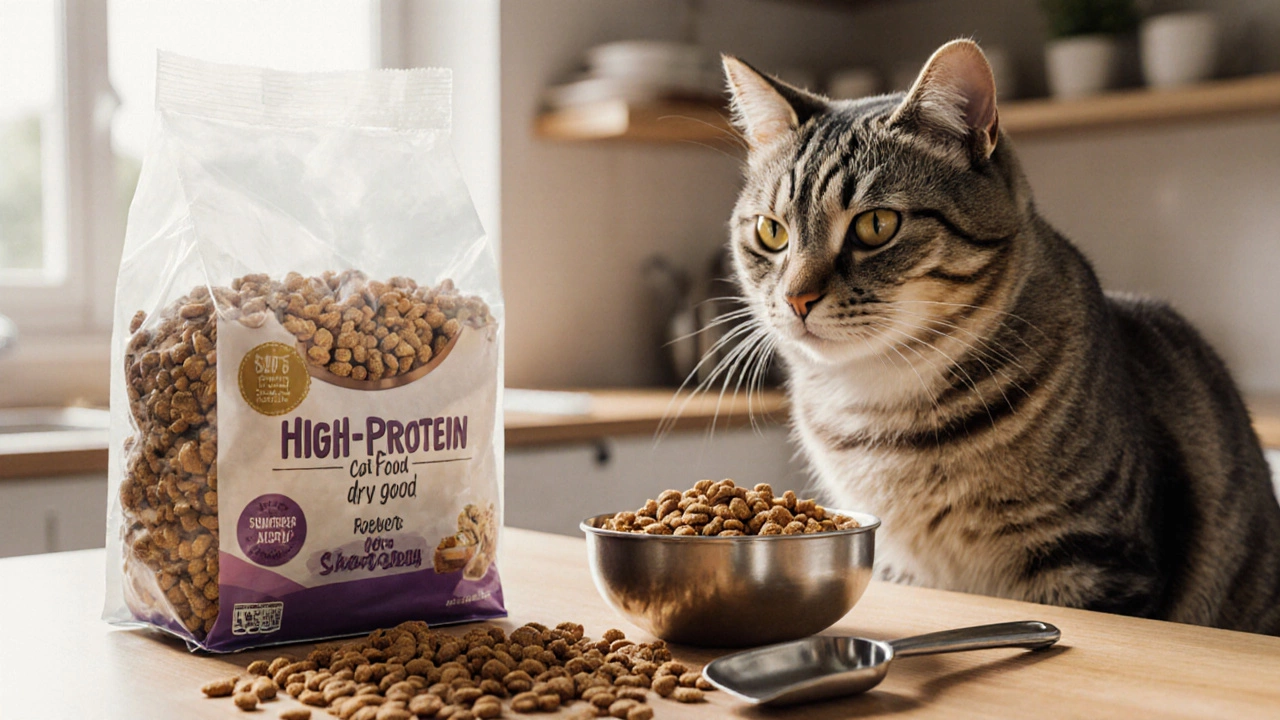Cat Dry Food: What Every UK Cat Owner Should Know
When working with cat dry food, a low‑moisture kibble designed to meet a feline’s nutritional needs. Also known as dry kibble, it offers convenience, long shelf life, and dental cleaning benefits. While it looks simple, choosing the right blend involves understanding protein sources, grain content, and moisture balance.
One of the most common questions is how cat dry food stacks up against its soggy counterpart. cat wet food, high‑moisture meals that mimic the water content of raw prey delivers extra hydration, which can be crucial for indoor cats who rarely drink from a bowl. The two aren’t rivals; they’re complementary. Dry kibble supplies steady energy throughout the day, while wet meals boost urine output and help prevent kidney issues.
Key Factors When Picking the Right Dry Kibble
First, look at the protein source. Real meat (chicken, turkey, fish) should appear at the top of the ingredient list. Plant‑based proteins can fill gaps but shouldn’t dominate. Second, consider the grain profile. Many owners opt for grain‑free formulas, yet a modest amount of rice or oats can aid digestion for some cats. Third, mind the calorie density—kibble is energy‑dense, so portion control matters, especially for indoor cats that don’t burn many calories.
Speaking of indoor living, indoor cat diet, nutritional plans tailored for cats that stay inside all day often require lower fat levels and added fiber to manage weight and hairball formation. Dry food with added omega‑3 fatty acids can support skin health and reduce shedding, a win for apartment dwellers.
Texture matters, too. Some felines prefer a crunchy bite that helps clean their teeth, while others may find large kibble pieces hard to chew. If you’ve noticed your cat spitting out kibble, try a smaller‑size formula or a blend that includes both crunchy and soft bits. This ties into the broader conversation about cat food texture, the physical form of food such as pate, shredded, or kibble. Mixing textures can keep meals interesting and encourage proper chewing.
Now, let’s address a tasty temptation: tuna. Many owners love sharing a bit of tuna with their cats, but it’s not a complete meal. tuna for cats, a protein‑rich fish often used as a treat lacks essential vitamins like taurine and can lead to mercury buildup if overfed. Use tuna as an occasional topper on dry kibble, not as a staple, and always choose canned tuna packed in water without added salt.
Understanding how dry food fits into a cat’s overall health plan is essential. Dry kibble provides sustained energy, but it also requires adequate water intake. Ensure fresh water is always available, and consider a water fountain to entice drinking. Proper hydration supports kidney function and helps prevent urinary tract issues, especially in cats that primarily eat dry food.
When you evaluate a brand, check for an AAFCO statement confirming the formula meets nutrient profiles for growth, maintenance, or senior life stages. Look for added vitamins and minerals such as vitamin E, B‑complex, and zinc, which support immunity and coat health. If your cat has specific health concerns—like weight management, allergies, or dental disease—seek formulas labeled “limited ingredient” or “dental care.”
Finally, remember that feeding isn’t a set‑and‑forget task. Monitor your cat’s weight, coat condition, and litter box habits. Adjust portions as needed, and rotate between dry and wet options to keep the diet balanced. By staying observant and choosing a high‑quality kibble that aligns with your cat’s lifestyle, you set the stage for a long, healthy life.
Below you’ll find articles that dive deeper into budgeting dog food, tuna safety, puppy training, and more. While the focus here is cat dry food, the collection offers a wide range of pet‑care insights you can explore to keep all your furry companions happy and healthy.
Can Cats Thrive on Dry Food Only? Facts, Risks & Tips
Explore if cats can thrive on dry kibble alone, understand the nutrition basics, weigh pros and cons, and get practical tips to keep your feline healthy.
